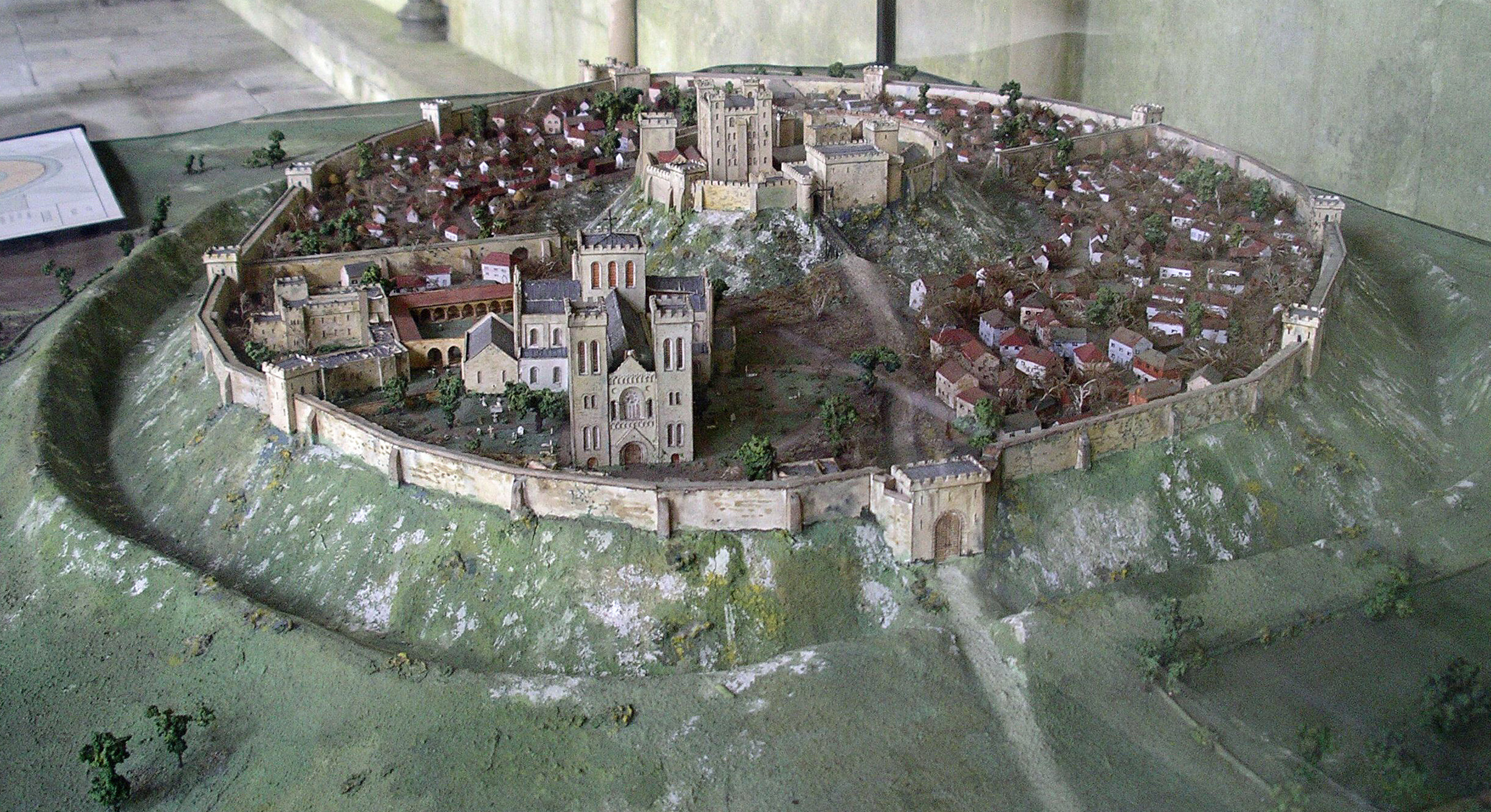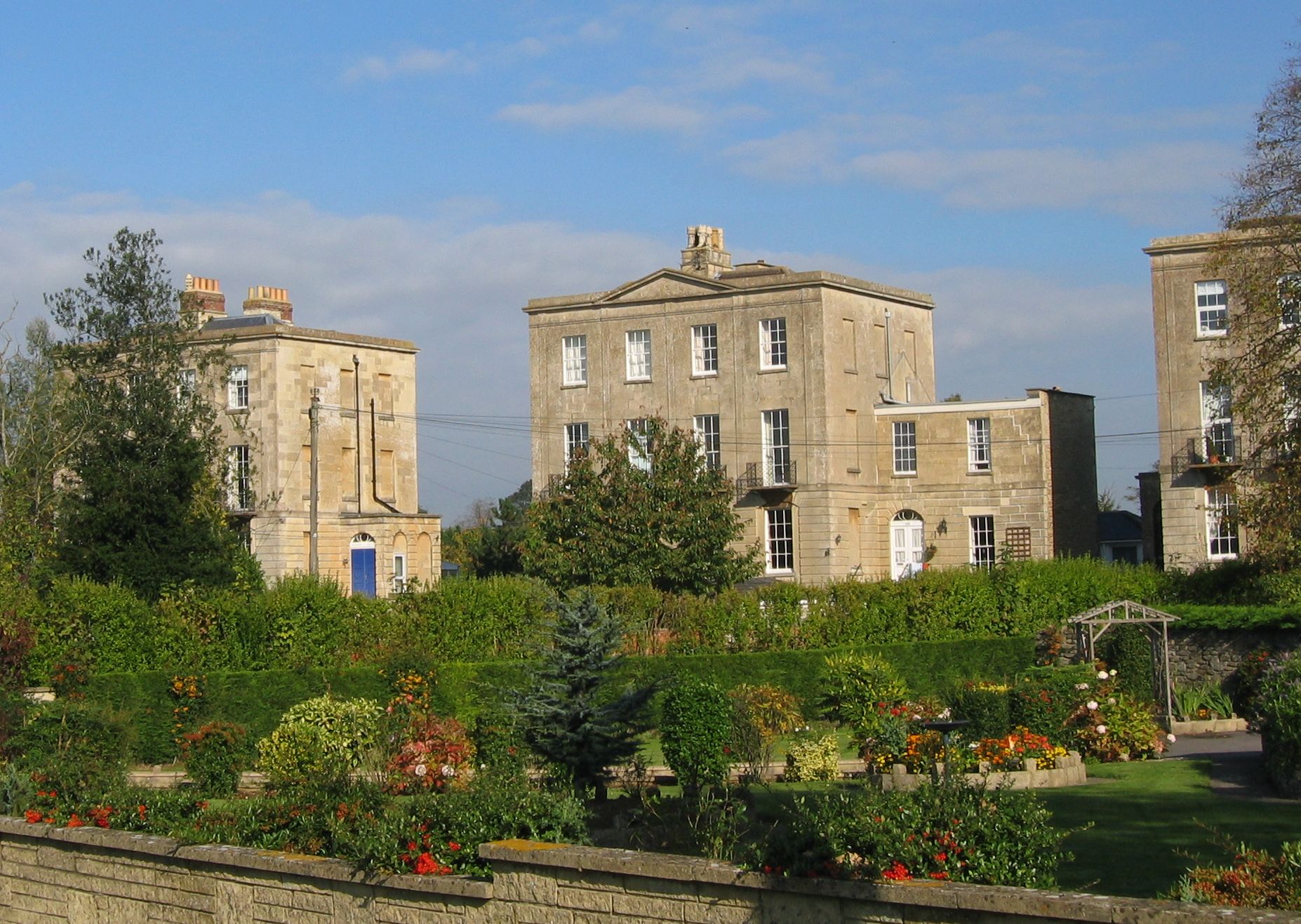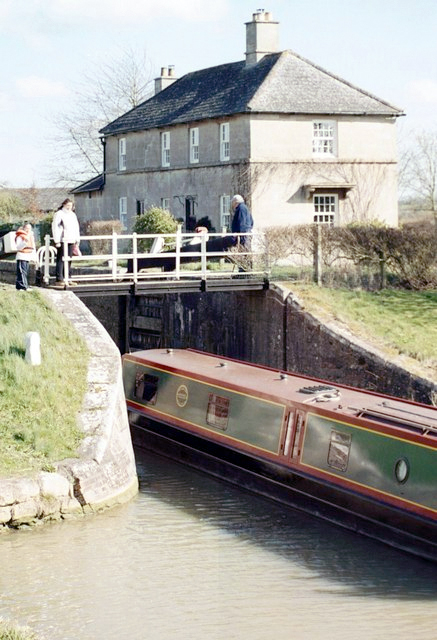|
Whaddon, Wiltshire
Whaddon is a hamlet in the civil parish of Hilperton, Wiltshire, England. Location The hamlet is northeast of the county town of Trowbridge. It is only accessible via Whaddon Lane which connects the hamlet to Hilperton. The River Avon and the Kennet and Avon Canal, half a mile apart, define the natural boundaries of the hamlet. The river separates Whaddon from the village of Holt, and the canal separates it from Hilperton and Semington. History Archaeological finds at the current location of the hamlet indicate occupation as early as the Iron Age, lasting into Roman times. Under the name of ''Wadone'', the village is mentioned in the Domesday Book of 1086, being held by a Saxon called Alvric, supporting two plough teams, and also having meadow and pasture. The Saxons used wood both for building and their utensils, so they have left little evidence in the archaeological record, other than a possible fragment of late Saxon pottery found at the site. At that time, Wha ... [...More Info...] [...Related Items...] OR: [Wikipedia] [Google] [Baidu] |
Salisbury
Salisbury ( ) is a cathedral city in Wiltshire, England with a population of 41,820, at the confluence of the rivers Avon, Nadder and Bourne. The city is approximately from Southampton and from Bath. Salisbury is in the southeast of Wiltshire, near the edge of Salisbury Plain. Salisbury Cathedral was formerly north of the city at Old Sarum. The cathedral was relocated and a settlement grew up around it, which received a city charter in 1227 as . This continued to be its official name until 2009, when Salisbury City Council was established. Salisbury railway station is an interchange between the West of England Main Line and the Wessex Main Line. Stonehenge is a UNESCO World Heritage Site and is northwest of Salisbury. Name The name ''Salisbury'', which is first recorded around the year 900 as ''Searoburg'' (dative ''Searobyrig''), is a partial translation of the Roman Celtic name ''Sorbiodūnum''. The Brittonic suffix ''-dūnon'', meaning "fortress" (in referen ... [...More Info...] [...Related Items...] OR: [Wikipedia] [Google] [Baidu] |
Kennet And Avon Canal
The Kennet and Avon Canal is a waterway in southern England with an overall length of , made up of two lengths of navigable river linked by a canal. The name is used to refer to the entire length of the navigation rather than solely to the central canal section. From Bristol to Bath the waterway follows the natural course of the River Avon before the canal links it to the River Kennet at Newbury, and from there to Reading on the River Thames. In all, the waterway incorporates 105 locks. The two river stretches were made navigable in the early 18th century, and the canal section was constructed between 1794 and 1810. In the late 19th and early 20th centuries, the canal gradually fell into disuse after the opening of the Great Western Railway. In the latter half of the 20th century the canal was restored in stages, largely by volunteers. After decades of dereliction and much restoration work, it was fully reopened in 1990. The Kennet and Avon Canal has been developed as ... [...More Info...] [...Related Items...] OR: [Wikipedia] [Google] [Baidu] |
Listed Building
In the United Kingdom, a listed building or listed structure is one that has been placed on one of the four statutory lists maintained by Historic England in England, Historic Environment Scotland in Scotland, in Wales, and the Northern Ireland Environment Agency in Northern Ireland. The term has also been used in the Republic of Ireland, where buildings are protected under the Planning and Development Act 2000. The statutory term in Ireland is "protected structure". A listed building may not be demolished, extended, or altered without special permission from the local planning authority, which typically consults the relevant central government agency, particularly for significant alterations to the more notable listed buildings. In England and Wales, a national amenity society must be notified of any work to a listed building which involves any element of demolition. Exemption from secular listed building control is provided for some buildings in current use for worsh ... [...More Info...] [...Related Items...] OR: [Wikipedia] [Google] [Baidu] |
Melksham
Melksham () is a town on the River Avon in Wiltshire, England, about northeast of Trowbridge and south of Chippenham. At the 2011 census, the Melksham built-up area had a population of 19,357, making it Wiltshire's fifth-largest settlement after Swindon, Salisbury, Chippenham and Trowbridge. History Early history Excavations in 2021 in the grounds of Melksham House found fragments of locally made pottery from the early Iron Age (7th to 4th centuries BC). There is evidence of settlement continuing into the later Iron Age and Roman periods, including Roman clay roof tiles. Melksham developed at a ford across the River Avon. The name is presumed to derive from "''meolc''", the Old English for milk, and ''"ham"'', a village. On John Speed's map of Wiltshire (1611), the name is spelt both ''Melkesam'' (for the hundred) and ''Milsham'' (for the town itself). Melksham is also the name of the Royal forest that occupied the surrounding of the area in the Middle Ages. Land ... [...More Info...] [...Related Items...] OR: [Wikipedia] [Google] [Baidu] |
Domesday Book
Domesday Book () – the Middle English spelling of "Doomsday Book" – is a manuscript record of the "Great Survey" of much of England and parts of Wales completed in 1086 by order of King William I, known as William the Conqueror. The manuscript was originally known by the Latin name ''Liber de Wintonia'', meaning "Book of Winchester", where it was originally kept in the royal treasury. The '' Anglo-Saxon Chronicle'' states that in 1085 the king sent his agents to survey every shire in England, to list his holdings and dues owed to him. Written in Medieval Latin, it was highly abbreviated and included some vernacular native terms without Latin equivalents. The survey's main purpose was to record the annual value of every piece of landed property to its lord, and the resources in land, manpower, and livestock from which the value derived. The name "Domesday Book" came into use in the 12th century. Richard FitzNeal wrote in the '' Dialogus de Scaccario'' ( 1179) that the bo ... [...More Info...] [...Related Items...] OR: [Wikipedia] [Google] [Baidu] |
Iron Age
The Iron Age is the final epoch of the three-age division of the prehistory and protohistory of humanity. It was preceded by the Stone Age (Paleolithic, Mesolithic, Neolithic) and the Bronze Age (Chalcolithic). The concept has been mostly applied to Iron Age Europe and the Ancient Near East, but also, by analogy, to other parts of the Old World. The duration of the Iron Age varies depending on the region under consideration. It is defined by archaeological convention. The "Iron Age" begins locally when the production of iron or steel has advanced to the point where iron tools and weapons replace their bronze equivalents in common use. In the Ancient Near East, this transition took place in the wake of the Bronze Age collapse, in the 12th century BC. The technology soon spread throughout the Mediterranean Basin region and to South Asia ( Iron Age in India) between the 12th and 11th century BC. Its further spread to Central Asia, Eastern Europe, and Central Europe is somewhat ... [...More Info...] [...Related Items...] OR: [Wikipedia] [Google] [Baidu] |
Semington
Semington is a village and civil parish in Wiltshire, England. The village is about south of Melksham and about northeast of Trowbridge. The parish includes the hamlets of Little Marsh and Littleton.election-maps.co.uk Semington Civil Parish boundary on Ordnance Survey 1:50,000 colour raster layer. Retrieved 23 October 2006. The village has two locks on the , known as the , and nearby is the start of the disused [...More Info...] [...Related Items...] OR: [Wikipedia] [Google] [Baidu] |
Holt, Wiltshire
Holt is a village and civil parish in the west of Wiltshire, England. Geography The village lies on clays of the Kellaways Formation (part of what is known as Oxford Clay), just above the alluvium of the River Avon and on a terrace of Ice Age gravel. A small persistent stream runs through it approximately north-west to south-east, from the dip slope of the Cotswolds to join the river near the southern parish boundary. The civil parish of Holt was established in 1894 and includes the village, manor, the hamlet of Forewoods Common, the Great Bradford Wood, and numerous farms beyond the village boundary. The parish boundaries were last modified in 1934 and encompass 786 hectares of land which rises from about 30 metres above sea level to a maximum of 75 metres in the most northerly parts of the parish. Holt parish is bounded in the north by that of Atworth (including Great Chalfield) and Broughton Gifford, to the east by Hilperton (including the hamlet of Whaddon), to the west b ... [...More Info...] [...Related Items...] OR: [Wikipedia] [Google] [Baidu] |
River Avon (Bristol)
The River Avon is a river in the south west of England. To distinguish it from a number of other rivers of the same name, it is often called the Bristol Avon. The name 'Avon' is a cognate of the Welsh word , meaning 'river'. The Avon rises just north of the village of Acton Turville in South Gloucestershire, before flowing through Wiltshire. In its lower reaches from Bath to the Severn Estuary at Avonmouth near Bristol, the river is navigable and known as the Avon Navigation. The Avon is the 19th longest river in the United Kingdom, at , although there are just as the crow flies between the source and its mouth in the Severn Estuary. The catchment area is . Etymology The name "Avon" is a cognate of the Welsh word ''afon'' "river", both being derived from the Common Brittonic , "river". " River Avon", therefore, literally means "river river"; several other English and Scottish rivers share the name. The County of Avon that existed from 1974 to 1996 was named ... [...More Info...] [...Related Items...] OR: [Wikipedia] [Google] [Baidu] |
Wiltshire Council
Wiltshire Council is a council for the unitary authority of Wiltshire (excluding the separate Unitary authorities of England, unitary authority of Borough of Swindon, Swindon) in South West England, created in 2009. It is the successor authority to Wiltshire County Council (1889–2009) and the four Non-metropolitan district, district councils of Kennet (district), Kennet, North Wiltshire, Salisbury District, Salisbury, and West Wiltshire, all of which were Local Government Act 1972, created in 1974 and 2009 structural changes to local government in England, abolished in 2009. Establishment of the unitary authority The ceremonial county of Wiltshire consists of two unitary authority areas, Wiltshire and Borough of Swindon, Swindon, administered respectively by Wiltshire Council and Swindon Borough Council. Before 2009, Wiltshire was administered as a non-metropolitan county by Wiltshire County Council, with four districts, Kennet (district), Kennet, North Wiltshire, Salisbury, ... [...More Info...] [...Related Items...] OR: [Wikipedia] [Google] [Baidu] |
Trowbridge
Trowbridge ( ) is the county town of Wiltshire, England, on the River Biss in the west of the county. It is near the border with Somerset and lies southeast of Bath, 31 miles (49 km) southwest of Swindon and 20 miles (32 km) southeast of Bristol. The town had a population of 37,169 in 2021. Long a market town, the Kennet and Avon canal to the north of Trowbridge played an instrumental part in the town's development as it allowed coal to be transported from the Somerset Coalfield and so marked the advent of steam-powered manufacturing in woollen cloth mills. The town was the foremost producer of this mainstay of contemporary clothing and blankets in south west England in the late 18th and early 19th centuries, by which time it held the nickname "The Manchester of the West". The civil parish of Trowbridge had a population of 33,108 at the 2011 census. The parish encompasses the settlements of Longfield, Lower Studley, Upper Studley, Studley Green and Trowle Common. ... [...More Info...] [...Related Items...] OR: [Wikipedia] [Google] [Baidu] |
Hilperton
Hilperton is a village and civil parish in Wiltshire, England. The village is separated by a few fields (the Hilperton Gap) from the northeastern edge of the town of Trowbridge and is approximately from Trowbridge town centre. South of Hilperton village are large areas of housing constructed from 1997, including Paxcroft Mead, Castle Mead and Lacock Gardens; these districts are sometimes mistaken for suburbs of Trowbridge. To the east are the Devizes Road and Stourton Park housing areas, and Paxcroft, a small industrial hamlet. In the west of the parish is the village of Hilperton Marsh which is adjacent to the village of Staverton (a separate parish) and the Canal Road Industrial Estate (part of Trowbridge). In the north, beyond the Kennet and Avon Canal, is the rural hamlet of Whaddon. The Bristol Avon forms part of the parish's northern boundary. The Paxcroft Brook, a tributary of the River Biss, crosses the south of the parish. History Settlements with altogether 12 ... [...More Info...] [...Related Items...] OR: [Wikipedia] [Google] [Baidu] |

.jpg)





.jpg)

